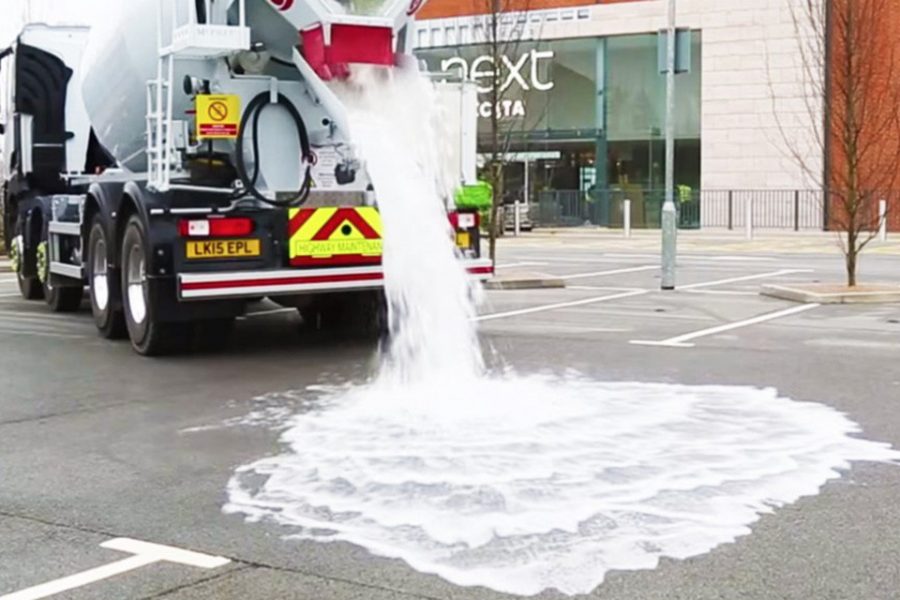Thirsty concrete: A revolutionary draining system
With new infrastructure constantly being built in today’s world, it seems only right that new ways to protect buildings are being designed, too. In 2017, Hurricane Harvey caused flash flooding in Houston and other parts of Texas that devastated buildings and communities. How can crises like these be avoided? Lafarge Tarmac, a company based in the United Kingdom, may have designed and constructed the answer back in 2015.
Tarmac’s invention is a porous concrete called Topmix Permeable that absorbs water at a staggering rate. Soon after it’s invention in 2015, a video of the “thirsty” concrete absorbing 4,000 liters of water went viral. The concrete can absorb 880 gallons of water in one minute, compared to traditional concrete that only absorbs approximately one thousandth of a gallon every minute.
The thirsty concrete doesn’t actually “absorb” water, but rather drains it into the ground. The material is made up of tiny pieces of granite that are packed together. Traditional concrete, on the other hand, is sand based.
The new concrete can be used in three different designs, each made up of two layers. The design schemes are full infiltration, partial infiltration and full attenuation.
Full infiltration is a pervious base covered by a layer of Topmix Permeable. All the water that passes through the design will be absorbed into the soil.
Partial infiltration has the same two-layer design as full infiltration; however, pipes are added to the previous layer to drain a portion of the water into sewers or swales.
The last of the design schemes, full attenuation, contains a membrane underneath the pervious layer so none of the water is absorbed into the soil.
Topmix Permeable, while pertaining many benefits, also has its limits. The product cannot be used on busy roads or in freezing climates.
“We [Tarmac] would still recommend that an impermeable surface is used in areas exposed to frequent tight turning circles and sections carrying heavy traffic,” a brochure from Tarmac reads.
With a top layer made up of fine, tightly packed granite, it’s reasonable to doubt that the material would not withstand the wear of city traffic.
If thirsty concrete was used in freezing climates, the water trapped inside would solidify and expand. The expansion would cause the permeable layer to bend or crack.
The idea of “thirsty” concrete has made its way to the United States, too. In the summer of 2017, Yellowstone National Park began a project with Michelin to coat all of the trails in the park with Flexi-Pave.
Contrasting to Topmix Permeable, Flexi-Pave is made up of stones and recycled tires instead of granite. Flexi-Pave also absorbs 50 gallons of water per minute, much less than the 880 gallons by Topmix Permeable.
Putting aside differences in designs, the concept of “thirsty” concrete is a groundbreaking one. In a world where rainfall rates are increasing each year due to global warming, thirsty concrete could play a key role in preserving infrastructure and communities.



